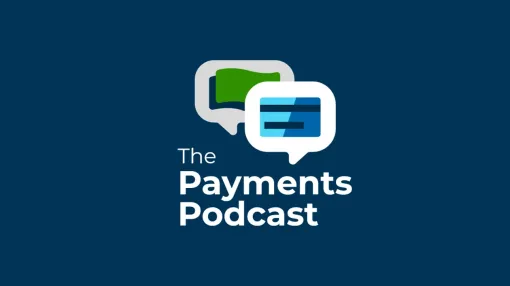Although usage is rising, payment automation still has a lot of runway left before it truly takes off.
As illustrated in the 2023 Business Payments Barometer, 38% of businesses in the United States and 32% of companies in Great Britain are still using manual Excel processes to manage their cash flow. That’s Wright Brothers stuff in a supersonic jet era.
One of the ways—the best way—to close the gap between digital and manual processes is through the adoption of Accounts Payable (AP) automation. With that in mind, we’ve assembled some of the most frequent questions we hear about AP automation, posed them to our subject matter experts, and the result is the following guide to the basics of AP automation.
What is AP automation, and do we really need it? Three words: efficiency, speed and accuracy. If you’re weighing the benefits of AP automation, look at your current manual processes, which can be time-consuming. On the flip side, automation allows for rapid payment processing and reduces the time your team spends on data entry and reconciling invoices.
Also, consider the ‘yets.’ Maybe you haven’t seen a significant error yet. But manual data entry can lead to duplicate payments or incorrect payment amounts. An AP automation solution eliminates, or at the very least, minimizes these errors.
How much will it cost? Cost varies according to the size of the business and the provider you’re using. Larger companies with more complex operations and larger volumes of invoices will generally pay more for AP automation than smaller businesses. However, rebates and cost-savings can help you offset the expenditure.
Additional costs may apply if you need to integrate the AP automation solution with an existing ERP system. The extent of this cost would depend on the complexity of your current system and the level of customization required.
What is the expected ROI? It varies from company to company. The starting point is critical. For example, starting an AP automation journey should begin with invoice automation, because the invoicing aspect of a particular business can vary so much depending on ERP systems and accounting for invoice coding. Typically, payments take a more standardized approach, which we can help achieve quickly and then look integrate into the invoicing process. This strategy assists companies to go live on their solution within 30 or 40 days, after which they can make the first payment and start earning rebates based on that payment volume.
Outside of those starting points, consider the following factors when calculating potential ROI: total number of invoices processed, ratio of paper to digital payments and fees paid to suppliers that require them to accept digital payments.
How long will it take to implement? Much like pricing, implementation depends on business size and complexity. Larger businesses with more complex workflows will likely take longer, and if your company operates in multiple locations or countries, this could also add time to the implementation process.
Current AP processes are also a factor. If your current processes are heavily manual, it might take longer to transition to an automated system, though you can realize the benefits of automation quickly. The right partner will help you map out your existing processes, spot areas for improvement, and then configure the new system to your needs.
Are there any risks involved? Any payment network these days must reckon with the ever-increasing and creative threats served up by fraudsters. The solution you select should minimize the risk of payment fraud associated with data breaches and other attacks, not to mention eliminating the risks inherent to paper checks.
At Bottomline, for example, we provide comprehensive user behavioral monitoring and payment risk scoring to identify red flags or anomalies that could indicate possible fraud attempts before they occur. Historical levels of fraud and protection measures within a payment network are critical questions to ask any potential payment or AP automation provider. Payment security is as important as efficiency.
Will it disrupt my accounts payable team? There will be changes to existing processes and potentially your team’s individual functions. Part of migrating to an AP automation solution requires some basic change management. It's important to clearly communicate the reasons for the change and the benefits it will bring.
The implementation might require adjustments to existing workflows. Some roles may change slightly, as manual data entry tasks are eliminated. However, this can free up your team to focus on more strategic tasks, increasing their value to the business and job satisfaction over the long run.
What are the most important features when selecting an AP automation system? Maximizing cost savings and streamlining the AP process means adopting an integrated payment strategy that combines ACH, virtual card, check payments, and business-to-consumer payments.
For example, our approach streamlines payment processing and reconciliation to facilitate a flexible payment strategy that aligns with different use cases, vendor preferences, and global payment needs, while offering modernization of your invoice process from receipt to approval. You gain the agility to adapt as your business evolves and grows. Be wary of payment solutions that either don’t offer the full breadth of payment types or only use the payment method that makes them the most money rather than the one you or your vendors prefer.
The most important features will depend on your business, but saving time and money, protecting yourself against fraud and increasing your flexibility and efficiency should be priorities for everyone.
Will my invoice process be disrupted? No, it will vastly improve. Many organizations use AP automation to automate the entire invoice-to-pay process. For example, Bottomline features a next-generation image and data capture platform powered by machine learning for seamless invoice receipt, storage, and processing of purchase order and non-purchase order invoices from any authorized source.
Automating 2-way and 3-way capture and reconciliation with the PO header and line items is essential, whereas some solutions are limited to PO header level matching. The software should include invoice risk scoring, which uses customized intelligent business rules to help identify unusual and potentially fraudulent invoices. In addition, best-in-class invoice automation capabilities should be proprietary, not outsourced. Whichever provider you choose to work with, the net effect you’re looking for is a massive boost in efficiency and fewer steps in your workflow.
How do I pick the right vendor? At a very basic level AP automation providers all provide a similar business model. It can be challenging to find differences between all but the most specialized ones, but it’s helpful to look at three points of differentiation:
- Security: Every AP automation solution has a security pitch. All of them will experience fraud attacks, but not all of them authenticate and then protect every business on their network, especially if that network includes north of 500k companies. Ask for specifics on fraud protection; the vaguer the answer, the more the alarm bells should go off.
- Scale: Some providers will build and maintain a network by partnering with other vendors to achieve scale; some providers are satisfied maintaining smaller networks. The best payment networks have built and continue to maintain a single-sourced, proprietary network. Success breeds success. For that reason, judge an AP automation supplier by the strength and size of their network because they’ll offer more enrollment opportunities and likely rebates as a result.
- Speed: Some providers delay payments due to adoption issues, a desire to hold on to cash, or more general network infrastructure issues. The best networks don’t delay payments regardless of whether they’re check or digital. It’s the best way to ensure that the network builds supplier relationships rather than putting them at risk.
How will it affect my vendor relationships? We have seen countless cases of improved vendor relationships thanks to AP automation. At the most basic level, prompt and accurate payments are always welcome by any vendor. An AP automation system ensures that all invoices are paid on time, leading to improved reputations and even more favorable terms from suppliers. The best in the business should also offer benefits for accounts receivable teams, including better remittance and invoice submission solutions.
What KPIs can we track to evaluate the solution? Some basics include cost per invoice, invoice processing time and percentage of invoices processed electronically. But there’s one KPI most companies overlook when it comes to AP automation: rebates earned.
Ideally, rebates significantly offset your AP costs. You want a provider that offers a higher rebate percentage on ACH and virtual card payments. You also want one that retains over 90% of its vendors, continuously adding new businesses to its network. The result? More electronic payments to your vendors and greater rebate earning potential for you.
Are there long-term considerations to explore after we “go live” with an AP automation solution?There are two things to consider here: Data and the ability to onboard current and future vendors.
First, the ability to generate and use data is a critical post-integration issue. For example, AP automation can provide data on what is being purchased, from whom, and how often. This data can highlight trends and patterns that might be missed, such as whether certain departments are spending more than others or if the company is relying too heavily on a single supplier.
Second, AP departments need to take a network-based approach to onboarding their vendors, which you will do at the beginning of the AP automation journey and will continue to do throughout. You should be able to find most of your suppliers are already on the network. A good network will make enrolling vendors easy, allowing you to continue increasing efficiency and earning more rebates.
Hopefully this answers some of your most pressing questions about AP automation. If you have more, our team is on hand to help.


